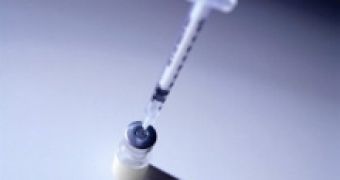Scientists announced yesterday that they have managed to cure diabetes in mice, by blocking an immune system attack that is causing the disease.
The discovery, first published 5 years ago, raises hopes for people suffering of type 1 diabetes, which affects half-million to a million Americans. This diabetes is harder to treat than obesity-associated type 2 diabetes, where the body stops producing insulin gradually.
The study also makes an interesting proposal, namely that of using embryonic stem cells as replacement cells for diabetics. In the three experiments, mice were injected TNF-alpha, a natural protein which stopped the immune system's attack on the much needed cells.
This was followed by an injection of spleen cells from healthy mice, which carry proteins that help immune cells ignoring healthy tissue. Not all mice were cured in the 3 experiments, the best results having 50% efficiency. In mice, it was discovered that the pancreas can cure itself and, if the same thing is discovered for humans, adding embryonic stem cells as the source of new pancreas cells will have a positive effect.
While scientists are trying to turn the stem cells into insulin-secreting pancreas cells, attempts to cure diabetes by transplanting pancreas cells from cadavers have not proven efficient in all cases. Trials on humans are expected to begin at the Massachusetts General Hospital.
Dr. Denise L. Faustman, the scientist who performed the first study, said "the new studies confirm that it is possible to stop the process by which the immune system mistakenly destroys insulin-producing cells." The cells which can be found in the pancreas are destroyed in the type 1 form of diabetes.
"We are actually elated by these studies. For 20 years, the hope has been that humans can regenerate insulin-producing cells. When we began this work we were not even allowed to use the word 'regeneration' in our papers. By 2003, we were able to use the word. These three landmark papers are extraordinarily important," Faustman added.

 14 DAY TRIAL //
14 DAY TRIAL //